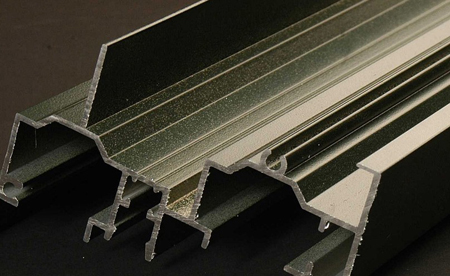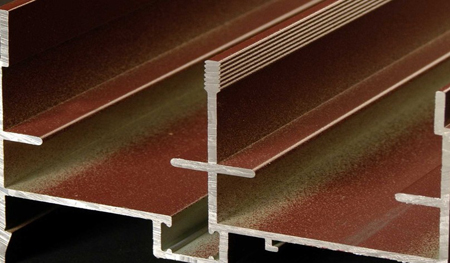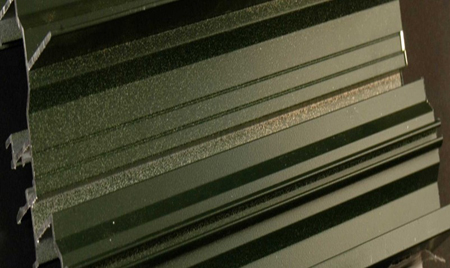 By Scott Moffatt, PPG
By Scott Moffatt, PPG
This article is the fourth in a series of five intended to help architects and other building professionals to more effectively color-match architectural metal coatings so that:
1. Building components arrive on the job site coated in the colors specified; and
2. Components produced by different coatings applicators appear as a coordinated whole when installed together on a building.
Click on the following links to read the previous articles in this series: Part 1,
Part 2 and Part 3.
 |
 |
 |
Many aluminum extrusion profiles are not symmetrical and have multiple edges, angles, grooves and other patterns that make painting the entire part difficult. Common problems include controlling flow, controlling film thickness and providing
total and even coverage of the part. |
This article focuses on the difficulty of matching color across multiple coatings profiles and offers tips on how to manage the process.
Profiles are extruded metal components used to construct curtain walls, louvers and other decorative accents. They usually contain intricate details, including angles, edges, grooves, recessed areas and other contours that make paint coverage difficult.
Since paint thicknesses vary on these components, color consistency will, too.
Metal thickness on profiles presents another challenge for coatings applicators. For a coating to cure properly, the metal underneath it must reach a minimum temperature. In places where the metal is thicker, it takes longer for the metal to reach the
prescribed temperature. When that happens, pigments are exposed to heat longer. This can cause the coatings to “burn” or discolor, a problem more commonly found with white or light-colored coatings.
With these constraints in mind, here are some recommendations for minimizing color variation on profiles:
1. Understand the limits of the profile. Crevices and angles make complete coverage difficult and uniform coverage unlikely. If a profile demands complete coverage and uniform thickness or color across all surfaces, consider a different configuration.
2. The same rule applies to thick profiles. Final colors on thick profiles may vary slightly due to the extended curing requirements.
3. If color matching is paramount, avoid profiles with large differentials in metal thickness, such as parts with thin protrusions attached to thick walls. The temperature required to cure the thicker wall will “burn” the coating on the thinner
protrusion, creating a different color on that part of the profile.
4. Before final approval, obtain a painted sample of the finished product from the coatings applicator before the building material is painted.
The fifth and final article in this series will provide tips for color matching during panel installation.